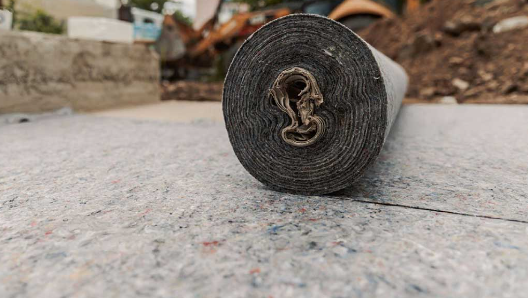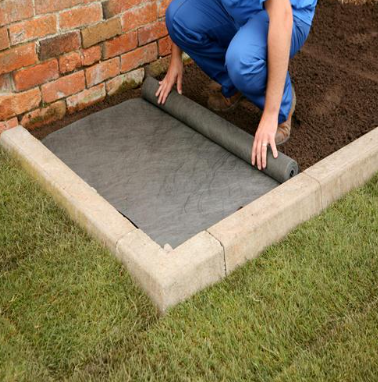- Understanding the Role of Geomembrane Liners in Waste Management
- Innovations in Geomembrane Liners for Water Management
- Geomembrane Liners: A Comprehensive Guide
- The Future of Geomembrane Liners in Civil Engineering
- Geomembrane Liners: Enhancing Landfill Stability
Manager:
WhatsApp:+86 177 0135 2670
Tel:+86 177 0135 2670
Email:marketing@okorder.com
Address:3rd Floor, No.2 Building, No.1 Sanlihe Road
What are the disadvantages of geotextile fabric?
The field of civil engineering and construction has experienced a seismic shift with the advent of geotextile fabrics that have been used for various purposes in this industry. Geotextiles are plastic sheets that play a pivotal role in different kinds of infrastructure projects across the globe, from erosion control to soil stabilization. However, like any material they also come with drawbacks. This article examines the weaknesses of geotextile fabric such as plastic geogrid, wholesale geogrid, fiberglass geogrid and glassfiber geogrid.

What Is Wrong With Plastic Geogrid?
Polyethylene or polypropylene is the most common type amongst them made from polymers which give it excellent resistance to environmental factors and tensile strength. Nevertheless, one drawback lies in its durability over time. Though these products may perform at least reasonably well under normal circumstances, they become damaged when used for prolonged periods under UV exposure or other similar conditions because their structural integrity deteriorates gradually due to aging effects. This has resulted into unexpected failures that require expensive replacement; thus engineers must be careful when choosing plastic geogrids for any given project.
Shortcomings Of Wholesale Geogrid
Wholesale geogrids bought in large quantities for major projects have some related disadvantages on quality control and uniformity issues. While it can be cost-effective to acquire large amounts at once, there may be variations between materials properties and manufacturing standards compared with individually sourced alternatives. Lack of quality assurance during manufacture or storage can lead to defects including weak seams, irregular mesh sizes or reinforcement not evenly distributed within the fabric all leading to poor performance and reduced life span of the entire system made up of a geomembrane material.Engineers should be cautious when selecting wholesale geogrids so as to ensure that they meet specifications required by a particular project.
Problems With Fiberglass Geogrid
This material is known for its high tensile strength as well as resistance to chemical degradation but it also has certain limitations that hinder its broader application in geotechnical engineering. Fiberglass geogrids lack flexibility which is a key feature compared to polymers or natural materials like fibers, despite performing better in terms of reinforcement and prevention of reflective cracking in asphalt. For instance, installation may be difficult especially where the project involves intricate geometries or tight curves since the fiberglass grid does not flex much. Additionally, these grids are likely to become brittle when exposed to very low or high temperatures thereby risking early ruin and endangering the structural stability of man-made ones.
Disadvantages Of Glassfiber Geogrid
This type of geotextile fabric is made up of woven or knitted glass fibers which have high dimensional stability and resistance towards biological decay thereby making it suitable for use under adverse geotechnical conditions. However, the major shortcoming associated with this fabric results from brittleness and mechanical damage susceptibility inherent to glass fibres. Although measures have been taken to make them better resistant against impact by coating them with some special substances during production, glassfiber geogrids are still prone to shattering into pieces under overloads or dynamic stress situations. This problem calls for careful treatment and installation for avoiding failure of structures that incorporate woven-glass fiber geo composites during long-term service.

Conclusion
Geotextile fabrics offer many advantages in civil engineering and construction projects, however, it is important to recognize their limitations and disadvantages. Some of these limitations are such as: the lifespan of plastic geogrids might be questionable, wholesale geogrids may experience issues with maintaining consistent quality control, stiffness of fiberglass geogrids can make their installation problematic and finally; glassfiber geogrids can be mechanically damaged. As a result, engineers and project managers need to thoroughly analyze all these aspects before choosing a particular type of fabric for a specific application in order to ensure an optimal performance, durability and economy over the long term."
-
2024-06-12Asphalt fiberglass geogrid construction plan
-
2024-06-04Asphalt fiberglass geogrid construction plan
-
2024-05-21What is the disadvantage of geogrid?
-
2024-05-21What is the lifespan of geogrid?
-
2024-05-21What are the 3 main uses of a geotextile?






